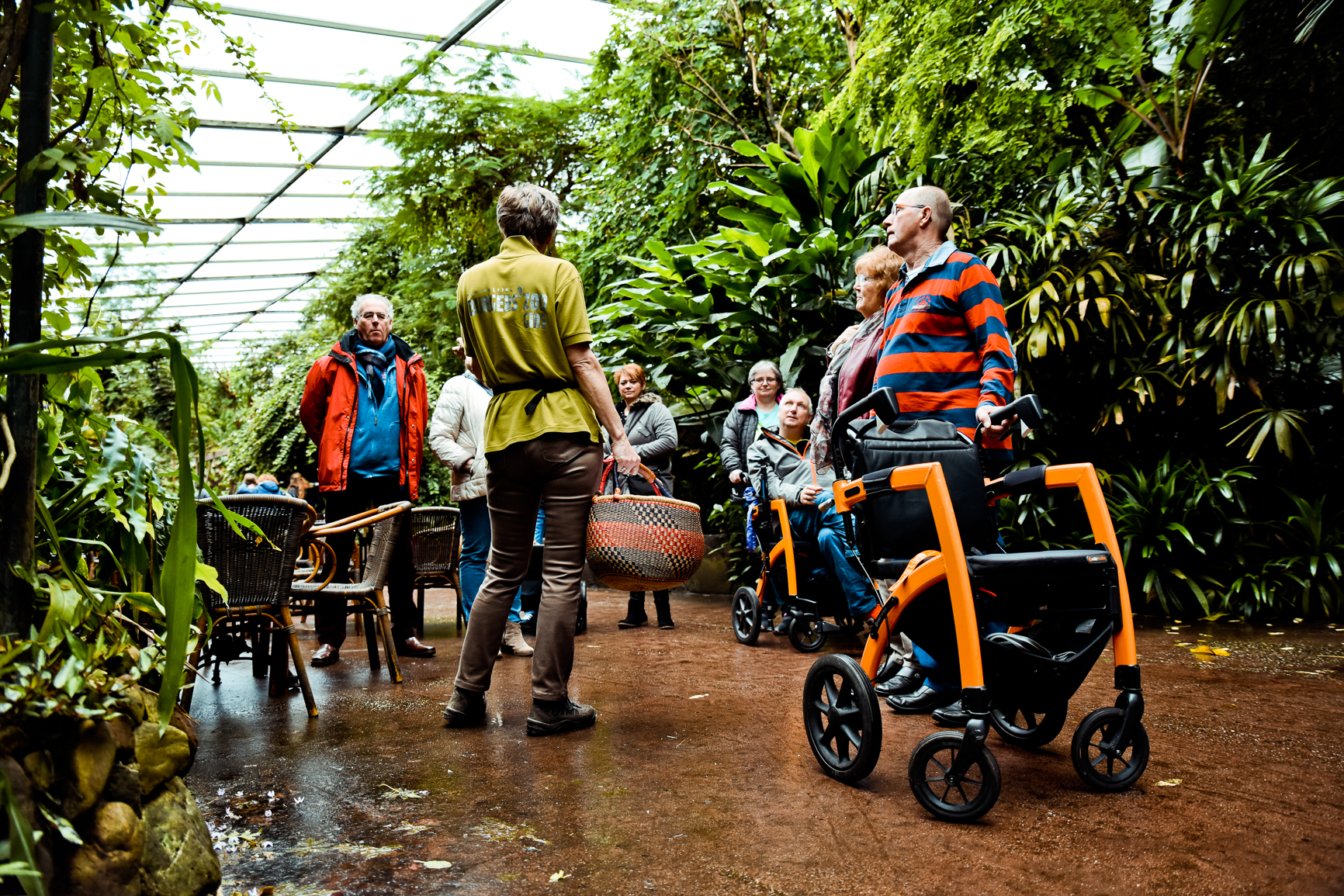
A rollator can help with walking, freezing, posture and balance problems seen in people living with Parkinson's disease.
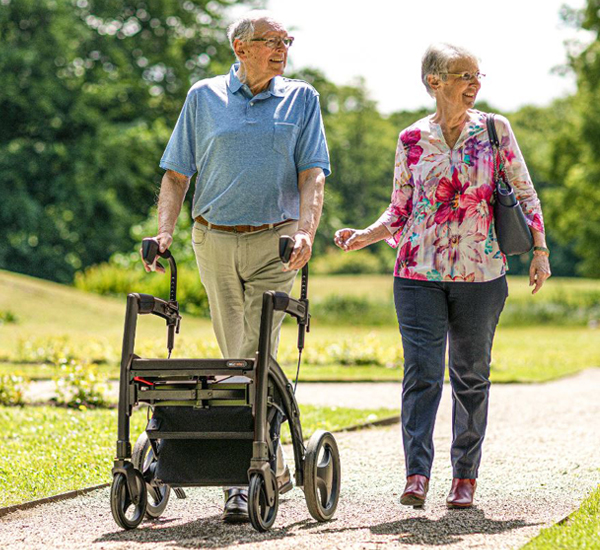
Case study
The life-changing capacity of a Parkinson's rollator
Recent case study conducted by the OT Service revels how the unique features of the Rollz Motion Rhythm rollator had a dramatic impact on the mobility of someone living with Parkinson's disease.
The person included in the study was presenting with symptoms of a stooped posture, masked expression, slow motor co-ordination. In addition, he was also presenting with a shuffling gait and freezing while mobilising, particularly at threshes where there were changes in colour or texture under foot. A trial of the Rollz Motion Rhythm was recommended as a method of increasing confidence and consequently engagement of meaningful activities.

A rollator is more than just an aid
Continue daily activities while improving mobility
Moving is very important for people with Parkinson's disease because it can reduce motor and non-motor symptoms of the disease. That is why the right support, in the form of a mobility aid, as well as physiotherapy or occupational therapy, are important to keep having an active life.
The idea behind the design of a Rollz rollator is to allow to walk longer and more often than people with mobility issues are used to, having full confidence in themselves and the stability of the rollator. They will be more self-reliant and may also start to enjoy moving more. This has both physical and mental benefits.
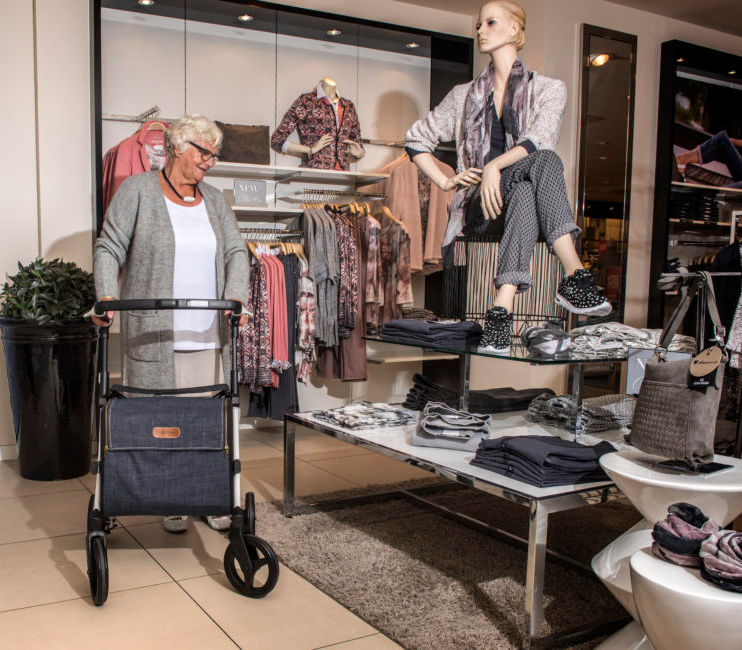
Freezing and the solution
A rollator to keep moving
The Rollz Motion Rhythm rollator has been designed specifically to support the symptoms of Parkinson’s disease, particularly for gait freezing by using sensory feedback through a laser line, vibration and tones promoting continuous placing of steps.
By focusing on external signals, whether visual, auditory or tactile, the focus is shifted to the specific cues. This way, the person consciously takes a step at each signal, thus walking to the rhythm of the signal.
Cues to prevent freezing in Parkinson's disease
Laser

The green laser line is projected onto the ground to eliminate a freeze and improve step lengths.
Sound

A metronome indicates the rhythm. The sound acts as a signal that helps regulate the walking speed.
Vibration

The handles vibrate in the walking rhythm, giving a tactile cue in noisy or quiet environments.
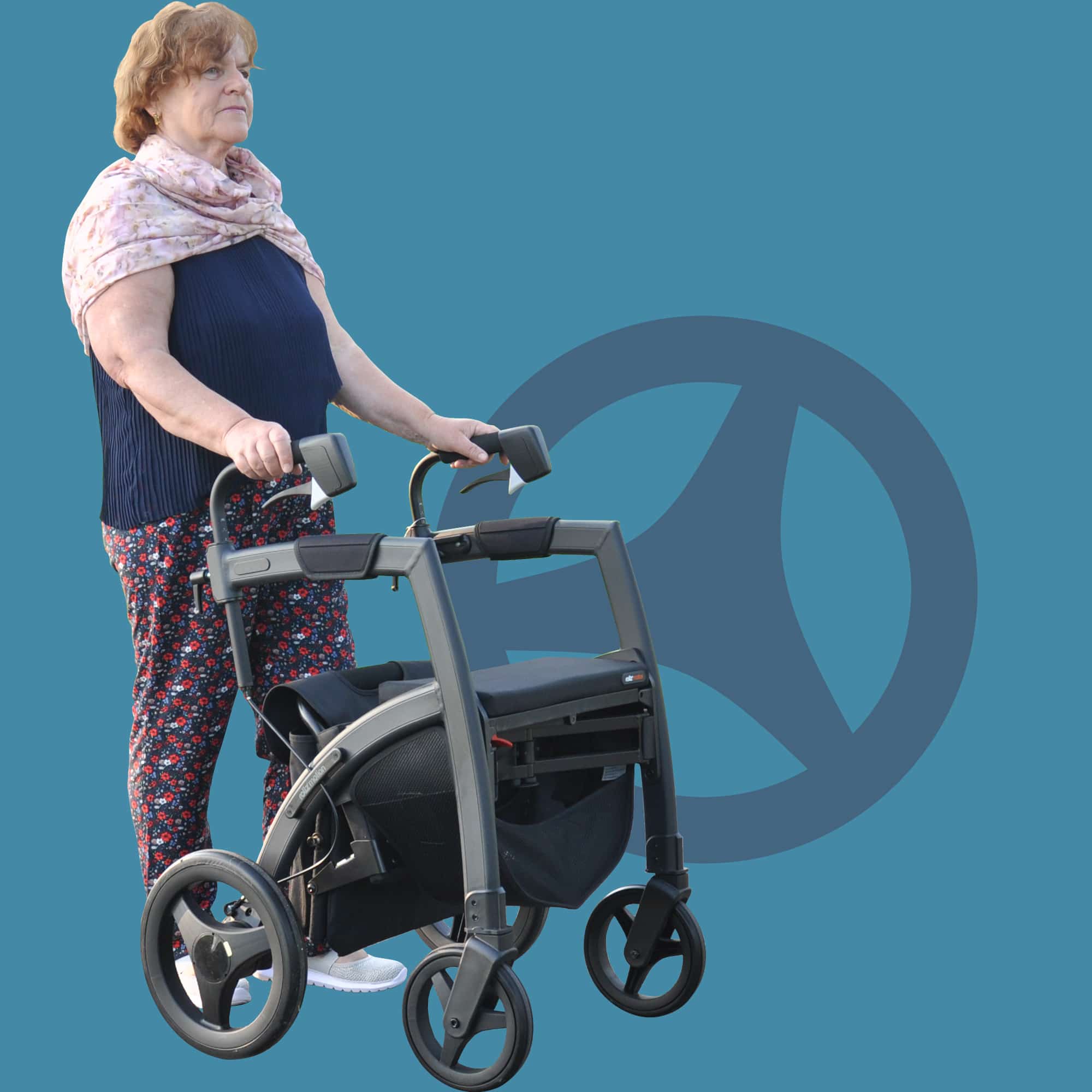
Help with Parkinson's symptoms
Prevent festination and falling
Gait festination is also a symptom of Parkinson's disease. This causes the user to take fast and small steps, which places the feet behind the centre of gravity of the body and can lead to a fall. By using a walker that could slow the user down and reinforce a better walking rhythm, the walker won't get pushed further away from the person but stay close to the body.
The Rollz Motion Rhythm offers stability and solidity. The drag brake is a useful accessory for those who may experience festination, and can easily be attached to the rollator. The drag brake is used to slow down the rollator continuously, keeping it close to the body, creating a better walking experience. This also reduces the chance of falling.
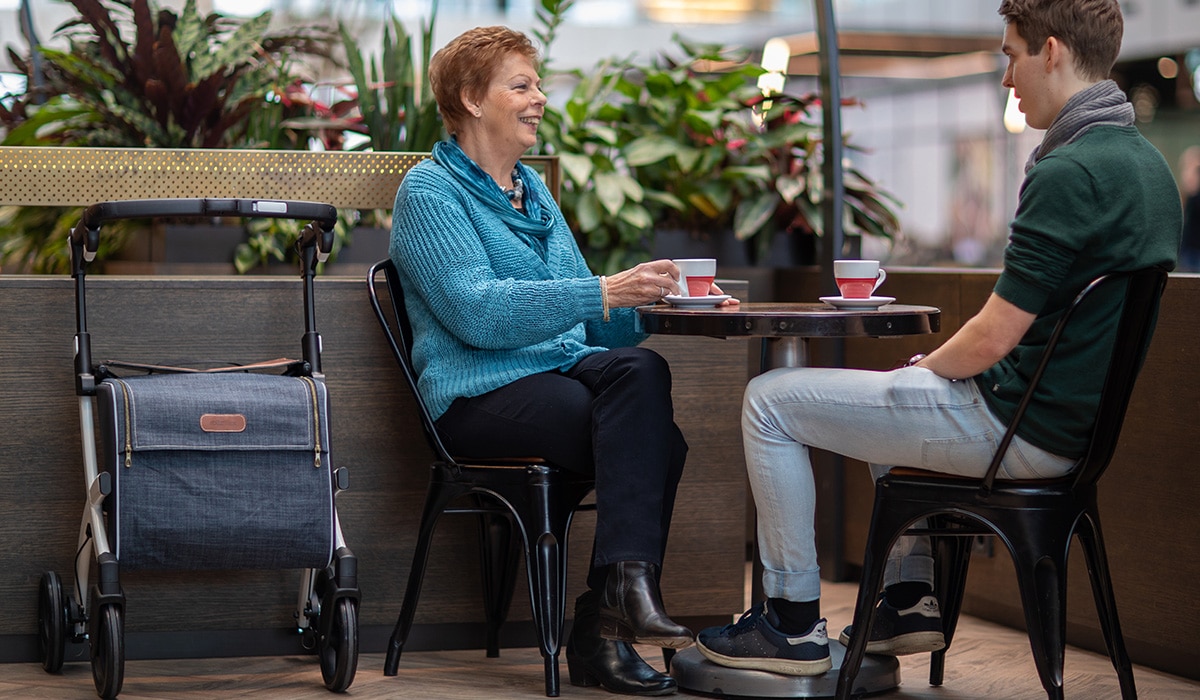
The ultimate walking experience
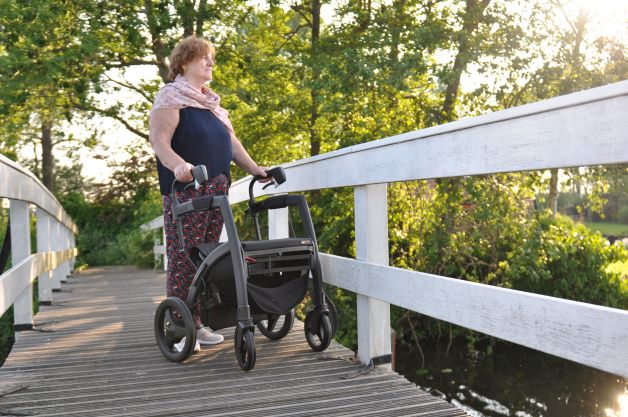
Research shows benefits of rollator use in Parkinson’s
A recent study shows that 80% of the Parkinson’s patients who participated in the research benefited from using Rollz’s Parkinson’s walker with different cues. Auditory, visual and tactile cues can help break the freeze of gait.
